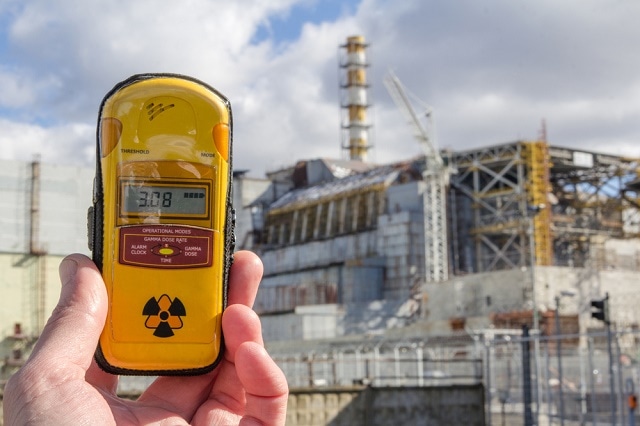Jun 27 2016
New research reveals that a large quantity of the radioactive fallout which settled on Tokyo a couple of days following the Fukushima mishap was concentrated and deposited in non-soluble glass microparticles in the form of 'glassy soot'.
 Image Credit: Eight Photo | Shutterstock.com
Image Credit: Eight Photo | Shutterstock.com
This indicated that much of the radioactive material had not been dissolved in rain and running water, and in all probability remained in the environment until eliminated by physical removal or direct washing. The particles also concentrated the radioactive caesium (Cs), implying that in certain cases dose effects of the fallout continue to be unclear. These findings were presented at the Goldschmidt Geochemistry Conference in Yokohama, Japan.
The flooding of the Fukushima Daiichi Nuclear Power Plant (FDNPP) following the catastrophic earthquake on March 11 2011 caused the discharge of major quantities of radioactive material, including caesium (Cs) isotopes 134Cs (half-life, 2 years) and 137Cs (half-life, 30 years).
A team of Japanese geochemists, led by Dr Satoshi Utsunomiya from Kyushu University, analyzed samples gathered from inside an area up to 230 km from the FDNPP. Since caesium is water-soluble element, it is believed that a majority of it from the radioactive fallout would have been washed away from the environment by rainwater.
However, investigation with advanced electron microscopy along with autoradiography methods illustrated that most of the radioactive caesium has fallen to the ground enclosed in glassy microparticles, formed during the reactor meltdown.
The investigation reveals that these particles primarily are made up of Fe-Zn-oxides nanoparticles, which, together with the caesium were entrenched in Si oxide glass that formed during the molten core-concrete interaction within the critical containment vessel in the Fukushima reactor units 1 and/or 3.
Due to the high Cs content in the microparticles, the radioactivity per unit mass was quite high ~4.4x1011 Bq/g, which is between 107 and 108 times more than the background Cs radioactivity per unit mass of the distinctive soils in Fukushima.
Additionally, closer microparticle geochemical and structural investigation showed what had occurred during the mishap at FDNPP. Radioactive Cs was emitted and formed airborne Cs nanoparticles.
Nuclear fuel at temperatures more than 2200 K melted the reactor pressure vessel causing the vessel to fail. The airborne Cs nanoparticles were condensed together with the gas from the molten concrete and the Fe-Zn nanoparticles, to form the SiO2 glass nanoparticles, which were then scattered.
Investigation results procured from a number of air filters gathered from Tokyo on 15 March 2011 revealed that 89% of the total radioactivity still prevailed due to these caesium-rich microparticles, instead of the soluble Cs, as had been initially believed.
This work changes some of our assumptions about the Fukushima fallout. It looks like the clean-up procedure, which consisted of washing and removal of top soils, was the correct thing to do. However, the concentration of radioactive caesium in microparticles means that, at an extremely localised and focused level, the radioactive fallout may have been more (or less) concentrated than anticipated. This may mean that our ideas of the health implications should be modified.
Dr Satoshi Utsunomiya, Kyushu University
Commenting, Prof. Bernd Grambow, Director of SUBATECH laboratory, Nantes, France and leader of the research group on interfacial reaction field chemistry of the ASRC/JAEA, Tokai, Japan, said:
"The leading edge observations by nano-science facilities presented here are extremely important. They may change our understanding of the mechanism of long range atmospheric mass transfer of radioactive caesium from the reactor accident at Fukushima to Tokyo, but they may also change the way we assess inhalation doses from the caesium microparticles inhaled by humans. Indeed, biological half- lives of insoluble caesium particles might be much larger than that of soluble caesium".